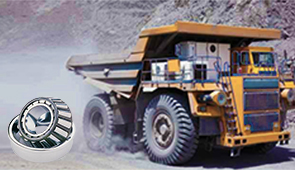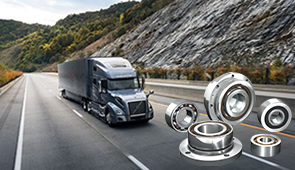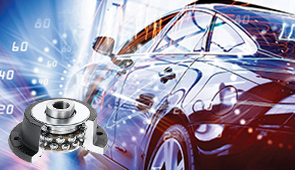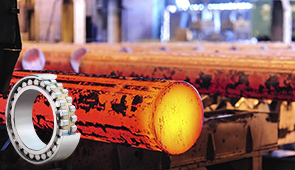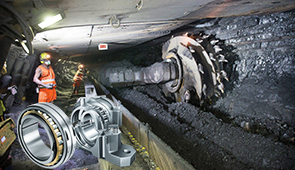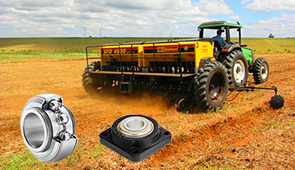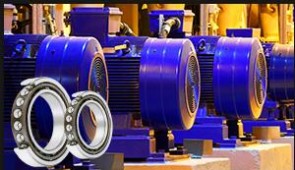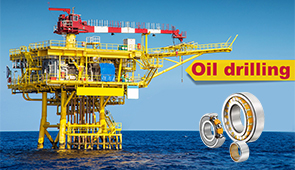Babbitt vs Journal Bearings: Which Bearing Reigns Supreme for Your Rotating Machinery?
When it comes to the smooth operation of rotating machinery, selecting the right type of bearing is a critical decision that directly impacts performance, efficiency, and equipment lifespan. Among the many options available, Babbitt and journal bearings stand out as two highly regarded solutions, each with its distinct characteristics and advantages. Understanding the fundamental differences between these bearing types, as well as their respective strengths and limitations, is essential for engineers and machinery operators aiming to make informed, application-specific decisions. This article explores the key attributes of Babbitt and journal bearings, providing a detailed comparison to help you determine which option best suits your operational requirements and industry needs.
What are the key differences between Babbitt bearings and journal bearings?
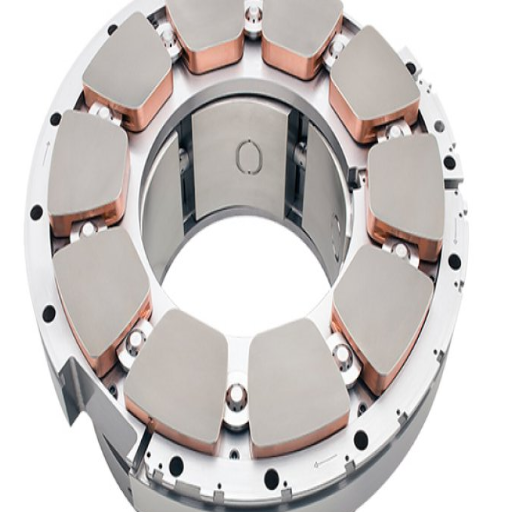
Understanding the basic structure of Babbitt bearings
Babbitt bearings are structures that typically use steel or bronze as their base, and on top of that, a layer of Babbitt material is added on top to hold it all together. Now, Babbitt itself is an alloy consisting of different metals. It initially starts with lead or tin and then antimony and copper are added to improve its resistance to wear and ability to carry loads. The outline of a babbitt bearing guarantees superb embedding properties which mitigates the spread of destruction that can be instigated by debris and misalignment during the operation.
- Load Capacity: Depending on the alloy, the Babbitt bearings tend to support moderate loads, with the maximum allowable bearing pressure anywhere between 1,000 – 3,000 psi.
- Friction Coefficient: Relatively low compared to other products, babbitt alloy bearings have a coefficient of approximately 0.02 – 0.10 under hydrodynamic lubrication conditions.
Babbitt bearings are designed to suit the needs of machinery that are subjected to frequent starting and stopping without wear and tear. The novice operational imperfections and the introduced malfunctions of these bearings are simply astounding.
Exploring the design of journal bearings
Journal bearings are essential components in rotary machinery, supporting loads while allowing smooth rotational motion.
- Load Capacity: Apart from the bearing dimension, the journal bearing’s maximum load-bearing coefficient is also determined by the material properties and the thickness of the lubrication film. For instance, high-grade babbitt alloys have proven suitability for load capacities between 1,000 – 3,000 psi.
- Lubrication Mechanism: To reduce friction and wear on machine parts, the use of oil or grease is really important in this regard. The friction coefficient has been reported to drop to about 0.02 – 0.10 when employing hydrodynamic lubrication where the bearing surface and journal are separated with a fluid film, hence the term explains itself.
- Surface Roughness: The surface of the calibrating bearings and journals are very sensitive and therefore need to meet certain values so that adequate lubrication is achieved. The surface roughness values allow the oil film to stick while not encouraging excessive wear. Typical values for surface roughness range from 0.1 to 0.4 microns Ra.
- Operational Speed and Clearance: The rotational speed of the journal is calculated along with the clearance that exists between the journal and the bearing surface. The relationship between those two sets a certain threshold which if undermined by the clearance, the journal may overheat. In precision applications, recommended clearances generally fall within 0.001 to 0.002 times the shaft diameter.
In following these guidelines, journal bearings prove to be dependable in situations that include frequent initiating or ceasing of motion or changes in load. The self-compensating feature of these bearings for slight misalignments or surface imperfections showcases their efficiency in design and operation.
Comparing materials used in Babbitt and journal bearings
Babbitt bearings are made out of alloys with embedded fragments of lead, tin, copper, and antimony owing to their exceptional exceptional conformability property and embedment techniques. These materials make it possible to deal with insignificant shaft misalignments and the failure of debris trapping, which minimizes shaft wear and tear. The soft matrix of Babbitt with its low friction, about 0.15 on steel surfaces, makes Babbitt suited for low to moderate speed and low to moderate load applications.
In journal bearings, different materials are used with the inclusion of bronze, cast iron, and even modern polymer composites, depending on the requirements of the application. For elevated load conditions, bronze or aluminum alloys are preferred because of their fatique-resistant properties and higher load-bearing capacities. These materials possess hardness and thermal conductivity which makes it possible for them to operate under increased temperature and heavier loads. For example, bronze alloys have a load capacity of approximately 10,000 psi and possess a third that conducts heat around 30 to 60 W/m·K.
In conclusion, Babbitt has an advantage in adaptability and reduced friction in low-duty applications, while stronger bronze is utilized in journal bearings where conditions of higher load and temperature are encountered. Even though bronze is preferred, it is important to consider the operational factors for maximum service life, such as load (psi), speed (rpm), and temperature.
How do Babbitt bearings and journal bearings handle lubrication?
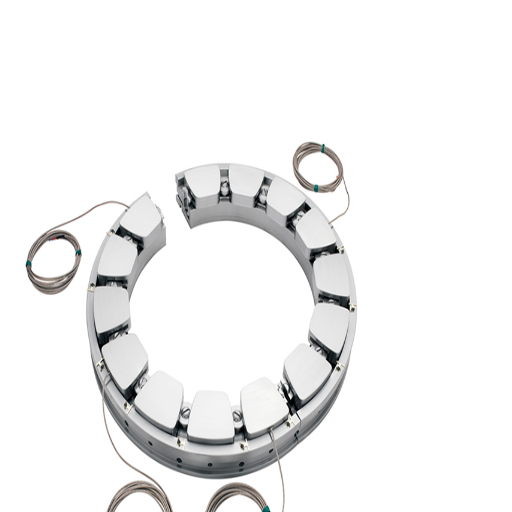
The Role of oil film in journal Journal-bearing Operation
The oil film has a crucial part to play in the minimization of friction and wear in the operation of journal bearings. Essentially, the oil film acts as a lubricant and prevents metal components from coming into contact with each other. Even with high loads and speeds, direct contact between parts is avoided resulting in smoother operation. The bearing provides proper lubrication while operating in the hydrodynamic lubrication regime where the oil film thickness is adequate for the load being applied.
- Load (psi): These units indicate the load that the bearing is capable of sustaining without undergoing deformation or rupturing the oil film. Conventional hydrodynamic journal bearings systems can function at loads between 50 to 2000 pounds per square inch depending on the design of the system.
- Rotational Speed (rpm): With the increase in rpm, the generation of oil wedge is higher which enhances the stability of the oil film. In advanced industrial applications, the bearing components are designed to operate at speeds above 10,000 rpm.
- Operating Temperature Range (°F): An efficient oil temperature is critical (for example 120-180 degrees) but going above this range can bring down the viscosity of oil, making its film strength very low.
By accounting for these factors and maintaining proper lubrication practices, journal bearings effectively handle the mechanical stresses encountered during operation and extend service life.
Lubrication methods for Babbitt bearings
Wearing out is one of the major problems Babbitt bearings face, and being fully operational is difficult. There are three primary lubrication methods employed that can help mitigate these issues:
- Bath Lubrication: bearings are put into a container filled with oil ensuring the oil bath covers the bearings. Bath Lubrication can be employed to moderately high working speeds, but oil must be checked as it should fully cover the bearing, to ensure oil lubrication at all times the bearing is in operation, it should serve greater than 50% of the bearing.
- Forced Lubrication: Lubrication in places with the highest friction and sharpest edges can be accomplished with the help of pressurized pumps. This form of lubrication is often used in modern-day machinery that moves at speeds above 10,000 RPM because it provides adequate lubrication. The pressure for warming oil is between 20 to 60 psi depending on the machine. This allows oil to provide the best cooling while simultaneously absorbing heat.
- Oil Mist Lubrication: Alongside other lubrication methods, oil mist lubrication saves the most oil. Compressed air can be used to propel the oil mist towards the bearings with the help of a fan. Oil that is forced to circulate at minimal pressure helps lower the chance of pollution and can be effectively used in clean environments. The force and density at which the carrying oil must be altered for the bearings to ensure proper distribution while under load and moving swiftly.
Special attention must be paid to all factors for the most suitable lubrication method to be applied including those bearing load, environment, operational temperature, and rotational speed. For instance, high-speed forced circulation machinery has high heat removal capabilities which is why it is preferred. Furthermore, every particular system has to be designed considering the specific nature of oils such as their thermal stability and viscosity about the operating temperatures (for example, 120°F – 180°F for maximum viscosity retention).
Which bearing type offers better performance in high-speed applications?
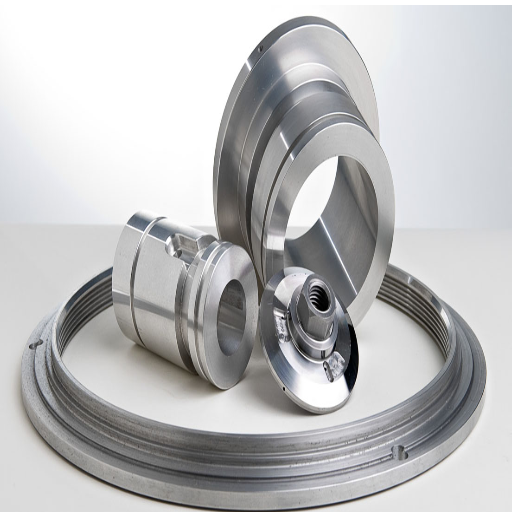
Evaluating Babbitt bearings in high-RPM scenarios
When evaluating Babbitt bearings in high-RPM scenarios, I find that their performance is largely determined by the material’s ability to withstand high-speed operation and substantial loads. Babbitt bearings excel due to their low coefficient of friction, excellent conformability, and ability to embed foreign particles, which reduces wear and operational risks. However, their limitations lie in temperature tolerance and fatigue strength.
- Surface Speed: Peripheral speeds of a maximum of 6,000 ft/min are typical for Babbitt bearings after which overheating needs to be properly controlled.
- Load Capacity: The strength of compressive Babbitt materials is sufficient for moderate to heavy loads in high-speed systems bearing up to 1000 psi.
- Thermal Conductivity: Minimally, Babbitt alloys can offer thermal conductivity estimates to be around 50 W/m·K. Such values enable the heat generated in incredible RPMs to escape through convection.
- Operating Clearance: I apply an oil film of 0.001-0.003 inches in thickness ensuring precise lubrication while also preventing metal-on-metal contact at high speeds.
In the end, even under high RPM, Babbitt bearings can be effectively used due to their reliability and robustness as long as they have an adequate lubrication system and thermal management is reasonable.
Journal bearings’ capabilities in high-speed rotating machinery
Journal bearings are adept at working with difficult operating conditions because of the capabilities built-in within them. Hydrodynamic lubrication is used to sprinkle some oil under very high power loads and speeds and its function reduces friction and wear.
- Operating Speed Range: The bearing can perform perfectly at over 10,000 RPM; the only factor to consider is the condition of the lubrication system.
- Load Capacity: Load bearing range basic parameters are as follows: 500 PSI up to the nominal value of 2000 PSI depending on its functioning.
- Lubricant Viscosity: Effective value of dynamic viscosity inthe 10-100 cSt range at working temperature can guarantee the minimum required thickness of oil film.
- Clearance Ratio: The value of the clearance ratio of a typical well-established bearing of 0.001-0.003 inches gives a good balance between nonlubricated vibration and lubrication.
- Thermal Management: Minimum requirement for removing excessive heat energy treated with forced convection or with the help of a built-in circulating cooling system to the target region.
With all these factors set and taking into consideration effective thermal management and lubrication, bearings concerning normal life and very extreme conditions can be fully dependable on.
Comparing friction and heat generation between the two bearing types
The operating mechanisms of rolling-element bearings and journal bearings greatly impact their level of productivity, friction, and heat generation. Journal bearings utilize hydrodynamic lubrication which provides a constant layer of lubricant on the surfaces which results in a lower friction co-efficient, that is 0.001 to 0.01, if sufficient lubrication is supplied and surface sanding of Ra < 0.4µm is performed. Furthermore, heat generation in journal bearings is greatly determined by fluid shear in the lubricant. The lubricant absorbs energy when it is thermally sheared and flows. The heat would then be expelled through thermal dissipation along with the aid of effective cooling systems.
The friction coefficient is slightly higher in rolling-element bearing systems and that usually lies between 0.0015 and 0.005. This is because of the point contacts or line contacts between the rolling elements. In addition, heat generation would be created via rolling resistance and resistance towards deformation at the contact points. Controlling energy loss and heat buildup in the system is attainable via proper lubrication through grease or oil, and selection of materials like hardened steel.
In conclusion, journal bearings are generally used for high loads and low speeds due to their ability to support large radial loads with relatively low friction. On the other hand, rolling-element bearings perform better in high-speed applications with medium loads.
What are the load-bearing capacities of Babbitt and journal bearings?
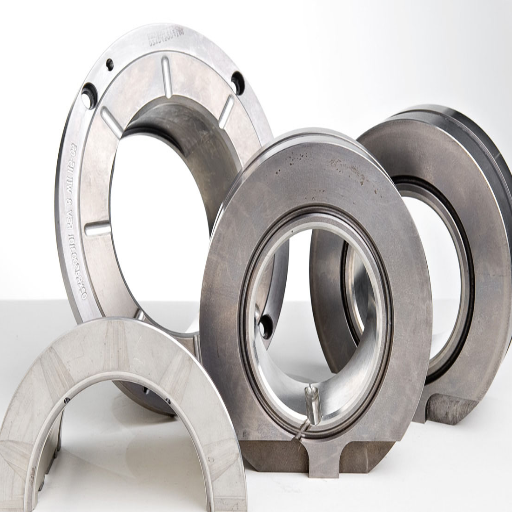
Understanding the load distribution in Babbitt-lined bearings
Babbitt-lined bearings distribute load across their contact surface uniformly, provided proper alignment and lubrication conditions are maintained. The load-bearing capacity depends on factors such as the material properties of the Babbitt alloy, the bearing’s dimensions, and the operational conditions.
- Material Properties: The composition of the Babbitt alloy, including tin or lead base, determines the bearing’s strength, embedment capability, and fatigue resistance.
- Surface Area: Naturally, Load and pressure per unit area are inversely associated. Better load distribution is achieved with larger bearing surfaces.
- Lubrication film thickness: Optimal film thickness is known to prevent undesirable metal-to-metal contacts, assuring smoothness of performance.
- Operating temperature: Increased temperature can overstress and degenerate Babbitt Matter. The load capacity and life of the material are consequently diminished.
- Rotational Speed and Load: At high loads, the low speed tends to be favorable towards hydrodynamic performance, while at over-accelerated conditions film stability can be gravely affected.
Using these factors, I can provide the proper rating for Babbitt-lined bearings considering the specific conditions they serve. This subsequently optimizes their performance and extends their life cycle.
Analyzing journal bearings’ ability to handle radial and axial loads
When assessing radial load support, the main aspects are the bearing capacity, the film lubrication thickness, and the oil viscosity at the operating temperature. These values give assurance that the bearing may be subjected to loads without contact between surfaces for lubrication purposes. For the journal bearings, specifically created for radial loads, accommodating features like thrust collars or axial grooves are provided for effective handling of axial forces.
- Radial Load Capacity: It depends on the value of the applied load, bearing geometry, and the shaft rotational speed. The bearing should preferably operate around its design load capacity to avoid excess wear and material fatigue.
- Axial Load Management: The ability to support axial loads is not a core design feature, but to provide control over axial thrust, most control bearings have specialized thrust-radial bearing configurations. These changes need to be carefully controlled to ensure that the performance remains optimum.
Through a systematic evaluation of these technical requirements supported by empirical and design data, I can justify the journal bearing’s ability to handle the specified radial and axial loads in its application.
How do Babbitt and journal bearings differ in terms of maintenance and lifespan?
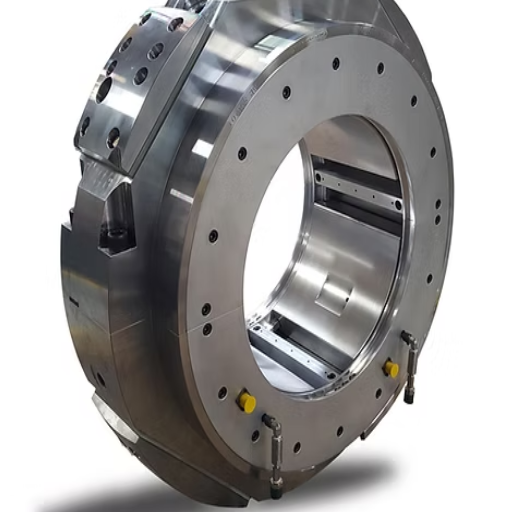
Exploring the wear characteristics of Babbitt-bearing surfaces
The design for Babbitt bearings aims to ensure that no unwanted wear takes place on the journal itself. These surfaces tend to wear down due to a combination of the applied load, the conditions of lubrication, and the operating temperature. Babbitt materials have an inherent composition most commonly comprising of lead and tin alloys that aid in durability, especially those with low friction characteristics. Early detection of scoring or surface fatigue can prolong maintenance and inspections.
- Load Capacity: Babbitt bearings are capable of withstanding moderate loads in a range of 10MPa whilst ensuring no deformation takes place.
- Operating Temperature: Withstands material deterioration at an approximate temperature range of 150 degrees Celsius.
- Lubrication Quality: There is always a requirement to reduce the friction encountered, thus proper lubrications are vital. Direct contact with the surfaces is prevented by maintaining a uniformly thin oil film of about 10 -20 microns.
- Surface Hardness: These Babbitt alloys manage to balance the dual material properties required to withstand surface wear whilst also being soft enough conformability. The Brinell hardness rating is within the range of 10 HB – 30 HB.
The longevity and reliability of Babbitt bearings can be achieved through optimal monitoring of exceeding operational conditions within the recommended limits.
Assessing the durability of journal bearings in various applications
It is very important to evaluate major material properties when assessing the durability of journal bearings in different applications. Achieving durability from my viewpoint necessitates compliance with specific requirements:
- Load Conditions: For moderate loads, a pressure of 10 MPa is relatively sustainable. If higher loads are anticipated, other materials or designs may be needed to prevent deformation.
- Thermal Stability: Elevated levels above 150°C can potentially damage materials so care should be taken. Ideally, operating temperatures should be below 150°C, however, if the system does operate over that temperature more advanced cooling or heat-resistant materials will be required.
- Lubrication Management: The operational life will be affected by poor lubrication. Setting oil film thickness between 10-20 microns is fundamental to reducing surface wear. If proper oil film thickness is not set there will be direct contact which will exacerbate the wear and the damage.
- Material Hardness: 10-30 HB provides a good range for meeting requirements since that level will ensure good conformability and support while avoiding excessive wear. Specific materials have to be used depending on the specific application and its operating conditions.
These adjustments if monitored effectively help in achieving reliable performance of journal bearings ensuring longer service life.
Comparing the risk of catastrophic failure between the two bearing types
It is crucial to understand the operational design set in each case when ranking the risk of catastrophic failure in a journal and rolling element bearings.
Unlike their counterparts, journal bearings do not suffer extreme failure suddenly. Rather, it is a post-gradual process that results from inadequate lubrication or wear and tear. Some of the critical technical requirements are maintaining an oil film of 10 to 20 microns thick, operating at temperature levels that do not exceed 150 degrees Celsius, and choosing materials with Brinell toughness of 10-30 HB. Together, this helps ensure that journal bearings do not suffer catastrophic failure while bearing heavy loads or aligning under certain degrees of misalignment.
In comparison to journal bearings, rolling element bearings sustain far more damage in case of fatigue, contamination, or spalling. Failures of this nature can result in catastrophic obliteration of the bearings. Many key factors such as the prescribed dynamic load rating the accepted alignment tolerances, and bearings lubrication determined by the manufacturers need consideration. Rolling element bearings also require a higher level of control when it comes to monitoring the vibration and noise levels since those factors passed a certain threshold serve as indications of the potential damage being done to the components.
As a result of this analysis, journal bearing is commonly favored in applications where reliability and service life are important, whereas rolling-element bearings may perform better in high-speed, low-load situations. Evaluating operational needs, I can work together with technical specifications to make a sound decision that meets the needs of the application.
Frequently Asked Questions (FAQs)
Q: What are the main differences between Babbitt and journal bearings?
A: Babbitt bearings are a type of plain bearing that uses a soft metal alloy (Babbitt metal) as a liner, while journal bearings are cylindrical bearings that support rotating shafts. The main differences include: Babbitt bearings have a thin layer of Babbitt metal applied to a stronger backing material, offering excellent conformability and embeddability. Journal bearings rely on a film of lubricant to separate the shaft from the bearing surface. Babbitt bearings are often used in high-speed applications, while journal bearings are common in various rotating machinery.
Q: In which applications are Babbitt bearings commonly used?
A: Babbitt bearings are commonly used in high-speed and heavy-load applications, such as: 1. Turbines and generators in power plants 2. Large industrial compressors 3. Steam turbines 4. Centrifugal pumps 5. Paper mill machinery These bearings excel in applications where low friction, high load capacity, and the ability to accommodate misalignment are crucial.
Q: What are the advantages of journal bearings over Babbitt bearings?
A: Journal bearings offer several advantages over Babbitt bearings in certain applications: 1. Simpler design and lower manufacturing costs 2. Better performance in high-temperature environments 3. Longer lifespan in some applications 4. Ability to operate with thinner oil films 5. Better stability at high speeds, reducing the risk of oil whirl 6. More suitable for applications with frequent starts and stops Journal bearings are often preferred in automotive engines, small motors, and some industrial machinery.
Q: How do Babbitt bearings compare to roller bearings in terms of performance?
A: Babbitt bearings and roller bearings have different performance characteristics: 1. Load capacity: Roller bearings generally have higher load capacity for their size. 2. Friction: Babbitt bearings typically have lower friction, especially at high speeds. 3. Speed limits: Babbitt bearings can often operate at higher speeds than roller bearings. 4. Noise: Babbitt bearings are generally quieter during operation. 5. Shock absorption: Babbitt bearings are better at absorbing shocks and vibrations. 6. Maintenance: Roller bearings usually require less maintenance and lubrication. The choice between the two depends on the specific application requirements.
Q: What factors should be considered when choosing between Babbitt and journal bearings for a specific application?
A: When selecting between Babbitt and journal bearings, consider the following factors: 1. Operating speed and load 2. Temperature range 3. Lubrication requirements 4. Space constraints 5. Alignment and misalignment tolerance 6. Maintenance accessibility 7. Cost considerations 8. Environmental conditions 9. Vibration and shock load 10. The expected lifespan of the machinery Evaluating these factors will help determine the most suitable bearing type for your rotating machinery.
Q: How do Babbitt bearings contribute to the cooling of rotating machinery?
A: Babbitt bearings contribute to the cooling of rotating machinery in several ways: 1. The Babbitt metal has good thermal conductivity, helping to dissipate heat. 2. The oil film between the bearing and the shaft acts as a coolant. 3. The bearing design often includes oil grooves or passages for improved lubrication and cooling. 4. Some Babbitt bearing designs incorporate additional cooling features, such as water-cooled bearing shells. These cooling properties help maintain optimal operating temperatures in high-speed and heavy-load applications.
Q: What are the main advantages of using Babbitt bearings in turbines and generators?
A: Babbitt bearings offer several advantages in turbines and generators: 1. Excellent load-carrying capacity for large rotors 2. Low friction, reducing power losses 3. Good damping characteristics, minimizing vibration 4. Ability to operate at high speeds 5. Conformability to slight misalignments 6. Easy to repair or replace the Babbitt layer 7. Good emergency running properties in case of lubrication failure These characteristics make Babbitt bearings ideal for supporting the heavy rotors in turbines and generators, ensuring efficient and reliable operation.
UCTH213-40J-300 with Setscrew(inch)
CNSORDERNO: Normal-duty(2)
TOGN: UCTH213-40J-300
SDI: B-R1/8
SD: 2 1/2
UCTH212-39J-300 with Setscrew(inch)
CNSORDERNO: Normal-duty(2)
TOGN: UCTH212-39J-300
SDI: B-R1/8
SD: 2 7/16
UCTH212-38J-300 with Setscrew(inch)
CNSORDERNO: Normal-duty(2)
TOGN: UCTH212-38J-300
SDI: B-R1/8
SD: 2 3/8
UCTH212-36J-300 with Setscrew(inch)
CNSORDERNO: Normal-duty(2)
TOGN: UCTH212-36J-300
SDI: B-R1/8
SD: 2 1/4
UCTH211-35J-300 with Setscrew(inch)
CNSORDERNO: Normal-duty(2)
TOGN: UCTH211-35J-300
SDI: B-R1/8
SD: 2 3/16
UCTH211-34J-300 with Setscrew(inch)
CNSORDERNO: Normal-duty(2)
TOGN: UCTH211-34J-300
SDI: B-R1/8
SD: 2 1/8









